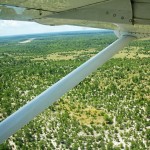Brecon Beacons – Hill Sheep Gathering (22.08.14)
Hill gathering around the upland area of the Brecon Beacons National Park has been an altogether quieter affair this year. Mainly due to the passing away of Ron Healey, who died aged 77, in March.
Ron was one of the most experienced and long serving of shepherds in the region. Starting at the age of fourteen, he was not only part of the local sheep farming community’s DNA, but also one of the most knowledgeable, as well as most vocal, when discussing all things sheep farming in the Brecon Beacons. Certainly he will be remembered by my family as one of the most colourful characters of the Brecon Beacons farming community, with great fondness.

Brecon Beacons – sheep scattered like small dots of icing sugar.
So when, this week, we clambered up into the Brecon Beacons’ to gather the hill-sheep off the Cwm Oergwn valley slopes (below Fan-y-Big in the heart of the National Park’s highest peaks), it was as much tinged with a heavy heart, as with the knowledge that if he was looking down from on high, it would have been in great anticipation. On the basis that he had taken part in just about every local high land gathering since his early years you felt as if you could hear his voice every now and again, carried by the mountain wind, with firm barrage of blue-language-sheepdog instructions at every straggler-sheep sighting.
The upland hill-grazing rights, above Nomadic Thoughts’ remote UK holiday house Llwyn-y-fron, and Pentwyn Farm’s Pen-yr-Heol Barn, are part of the Brecon Beacons National Park’s 3,327 hectares of the common land grazing. In our case the hill grazing rights are shared by three farms Pentwyn, Pannau and Wern-y-Marchog. Not a bad place to hang-out if you are sheep, set amongst the most stunning of big mountain scenery landscapes; if you had to choose a location to be a farm animal it would, I am sure, be top of the list. Grazing this upland common land, the views are as breath-taking as the feeling of wilderness is complete. Home to not only the grazing sheep, but also a unique collection of wild mountain ponies. In addition, the exciting array of birdlife; migratory swallows to gliding red kites blend into the mountain scenery, as the ever-evolving change in colour, mood and atmosphere often feels akin to the speed at which the weather changes on the high seas.

Quad patrolling below the heather-line.
With gathering taking place four times a year (June = shearing; August = weaning; October = tupping; December/January = harsh mid-winter conditions) our assorted crew of proper shepherds, wanna-be-shepherds (me and my family), dogs and quads took position at different locations up, across and on top of the Valley. Supported by eleven dogs and four quad-bikes, the team, headed by Thomas Jones (Pentwyn Farm) gathering and driving the sheep around, and then down, from the head of the valley, was supported by Flash (Tylebrythos) and Dai Buck Philipps (Wern-y-marchog Farm). As they marshalled and drove from the high northern ridge above, Dai Pannau, Ben Amphlet, Rory Matthews (Llwyncelyn) brought the total corral of approx. 1,500 sheep into the Pentwyn pens. The lower valley river crossing and steep ravine terrain was covered by Rowan and Finn Starkey (Pentwyn Farm) and my family. With all angles supposedly covered the sheep were brought down into Pentwyn’s hill pens area, where the slopes start to lower and the fields give way to the open National Park terrain.
![]()
Indeed, approximately 35% of the Brecon Beacons National Park is unfenced, mountainous hillside. Established in 1957, the National Park was one of Britain’s first ten official natural asset areas, designated to be safeguarded due to the beauty of the dramatic landscape.
I hope that these photos (taken whilst hill-gathering this week), emphasis the dramatic, glacial mountain valley landscape, with high Brecon Beacons peaks, steep hillsides, deep valleys and distance rural farming valley-views. Where the sheep often appear like tiny specks of sugar on a giant glacial-mountain cake.
Once gathered, the sheep are run through the pens and separated into their particular farm groups (by checking their ear-marks), before being re-sorted for weaning, as much as general health-checking. Just over twenty-fours later the sheep were weaned, injected to control sheep scab and back out on the hill. Or, in the case of the lambs, the females are held back for breeding and the wether lambs (castrated males) ready for market.
![]()
Keeping a track on the various sheep numbers proved even more difficult this week, as with additional strays from neighbouring Beacons farms swelling the numbers considerably, the absence of Ron Healy (‘the ear-mark-king’) was even more evident.

Early morning – lining the high ridge up to Fan-y-Big.

Upper valley quad sweep.
![]()

Quad & dogs.
![]()














![]()
Additional blog psotings on Brecon Beacons – Breconshire Hedgerows – Summertime in Brecon Beacons







